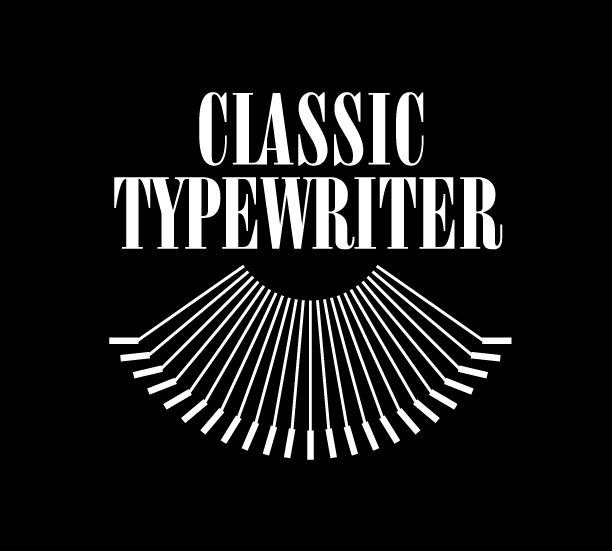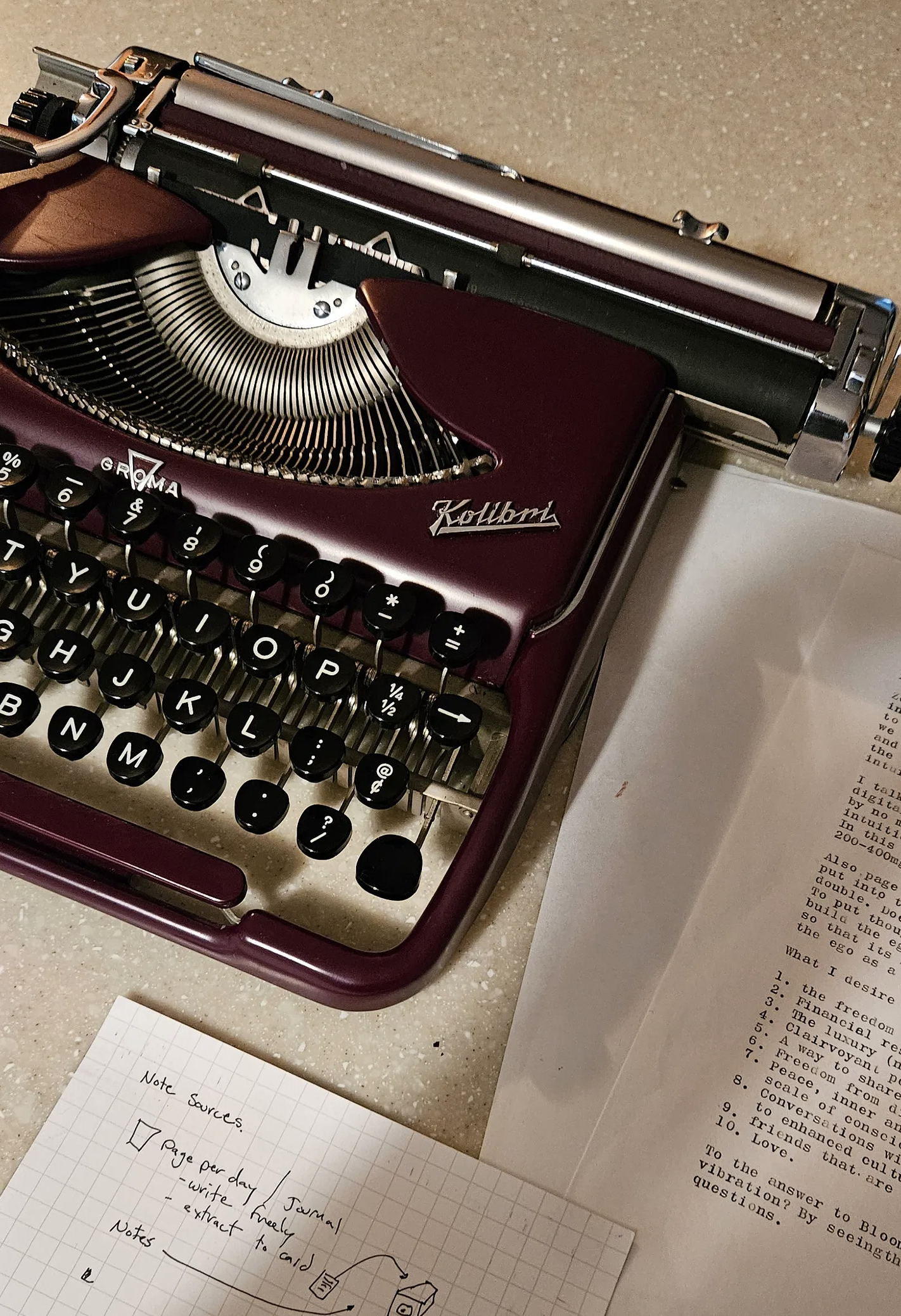Building a Stable of Typewriters
To suit a variety of writing needs
First of all, I'm a minimalist. I long to own only one typewriter. [I'm working on it].
That being said, I also love trying out typewriters when I see one in the distance: and I don't consider a typewriter as fully 'tried' until you've run at least a few dozen pages through it. [People often complain too early, whereas they'd get the gold if they went just a little further ahead.]
Classic Typewriter is a reader-supported publication. To receive new posts and support my work, consider becoming a free or paid subscriber.
Here’s the Groma Kolibri I’ve been using lately…
A Stable of Writing Machines.
Why might you want more than one machine?
Here are a few reasons…
Language.
If you type in a few languages, you might want a machine for each language.
Typeface.
You know that, unlike a computer, where the click of a button changes the font, a typewriter has the typeface built in (with a few exceptions: the Hammond, the Blickensderfer, the Imperial A and B, and the IBM Selectric and Wheelwriter all had changeable type elements so you could swap them out). Dang, my quest to winnow my collection down to one, I realize as I write this that I have a 1923 Hammond Folding, a Blickensderfer 5, an IBM Selectric III. Fortunately, I sold the Imperial B from 1916: on those you change out the whole segment, typebars and all, to get a different typeface... which is also difficult easy to find.
So, for the most part, 1 machine = one typeface.
And you might want a variety of styles or sizes (yes, the size is fixed too, though on some machines you can adjust the spacing between the letters: remarkably I notice this feature on my 1980 Selectric as well as the 1923 Hammond!)
You also might opt for Italic or Cursive now and again. If you need to pound in the aching beauty of it all. (Of course, some computer folks may not be able to read cursive anymore! Their loss!).
Changeable Type Element on Selectric:
Writing Location.
Of course, a portable typewriter is portable. But some people opt to have a different machine for every place they write. One in the cabin, one on the boat (watch the rust!), one in the home.
Travel.
Some people opt for a hulking brute like an Underwood Number 5 on the desktop, or even a larger portable like an Olivetti Studio 45, and then a portable machine like a Groma Kolibri or a Hermes Baby to take when they go a-wanderin.
The pain of getting them all to fit into one.
Some writers are itinerant by nature, so they're tempted to get an ultra portable as their one and only machine. Of course, it's been done, but it's a pain in the butt to type on an ultra portable when you can type on a full sized machine, in my opinion. You'll get used to anything, but the shift up to more features and a heavier desk weight can be downright luxurious after years on a cramped ultra portable.
And trust me I know the feeling, because I attempt to use a Groma Kolibri as my main machine. It’s delightful and challenging as a man who cranks out manuscripts to do so on that particular machine (though it’s easier than on my 1923 Hammond Folding.
A backup.
While I oft find myself ruminating about the resilience and durability of a manual writing machine (in stark contrast to contemporary plastic digital crap) let's face it, a drawband will slip off every now and again. It's pretty rare, unless you're tinkering too much.
So when you're in the throes of inspiration, and you can't wait to get it repaired, a backup machine can be just the thing. Whip it out and keep writing, toss the other thing aside into the pile of machines that need work (and keep it smaller than my pile please!).
Pile:
Style.
You might just have projects going that depend upon a certain style of machine. One might yearn for an antique, one for a modern portable.
Bask in the profound difference between the feel of a 1970 Olympia SM9:
And the 1937 Underwood Noiseless:
Are you telling me that these instruments won’t inspire vastly different words???
Uses.
You might have a fiction drafting machine (smaller typeface, perhaps, with tabs), a poetry machine (larger or specialized typeface, more inspiring), a letter-writing machine, a machine for forms or envelops, a machine for the kids or family use, a machine for recipes.
In summation.
So, while there are many options, mostly you might consider getting down to two or three than can do everything you need (an art in and of itself). If you have the space and budget, then fill the void with typewriters and write! (There's also the drawback that the more machines you have and that sit idle, the more work it is to get them each up and running as writers, and to keep the ribbons fresh, etc). Typewriters, like engines, abhor idleness.
One of the best machines to fill the gap between them all, in my opinion, is the Hermes 3000. That’s my info page about them.
The reason I say this is because it is relatively portable, relatively light, relatively resilient, and includes every feature you’d possibly need. The clamshell case keeps it portable and durable during travel, so while inches higher than the baby, you gain a lot more in the full sized carriage return handle and other features, in my opinion). The closed bottom helps, for lap typing. (Most portables have an open bottom).
Like this SM9:
Which is fine for the desktop, not so good for writing on soft surfaces like a lap or a couch. If anything gets up in there, it stops working until the fluffy obstacle is out of the way again.
And if you just want to get writing without breaking the bank, I’d suggest getting one of these Smith Coronas and trading up later via our lifetime trade in policy.
I hope this helps you in your quest for the perfect words.
Write on,
Steven Budden Jr.
The Classic Typewriter Company.






